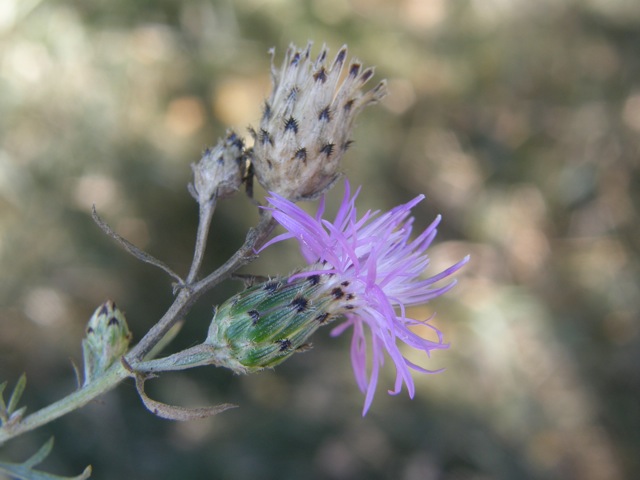Asteraceae, the daisy, sunflower, or composite family.
Description:
Plant:
Branching, wiry stems to 3', with pinnately dissected gray-green leaves,
and small groups of pink to purple flower heads.
Flowers:
Pink to purple heads composed entirely of disk flowers, about 1" wide with
distinctive swollen base and black or dark brown-tipped involucral bracts.
Borne in small groups at termination of the stems, and sometimes singly in
leaf axils.
Leaves:
Alternate, gray-green, highly dissected into linear segments, to 4"-8".
Degree of dissection is less towards the top of the stems.
Fruit:
Dry, seed-like, with silky hairs that allow it to be transported by the wind.
Blooming:
July-August
Habitat:
Fields, waste areas, disturbed ground.
Comments:
Naturalized from Europe, this plant is frequently an invasive weed,
and is on the problem plant lists of many states.
A pioneer species, it is has deep taproots, and is hard to eradicate once
established.
The common name refers to the dark-tipped bracts; these and the
linearly dissected leaves distinguish the plant from other knapweeds.
There seem to be at least three synonymous scientific species names for the
plant, all in current use.
Where to find it:
In patches on the west side of the pond.
